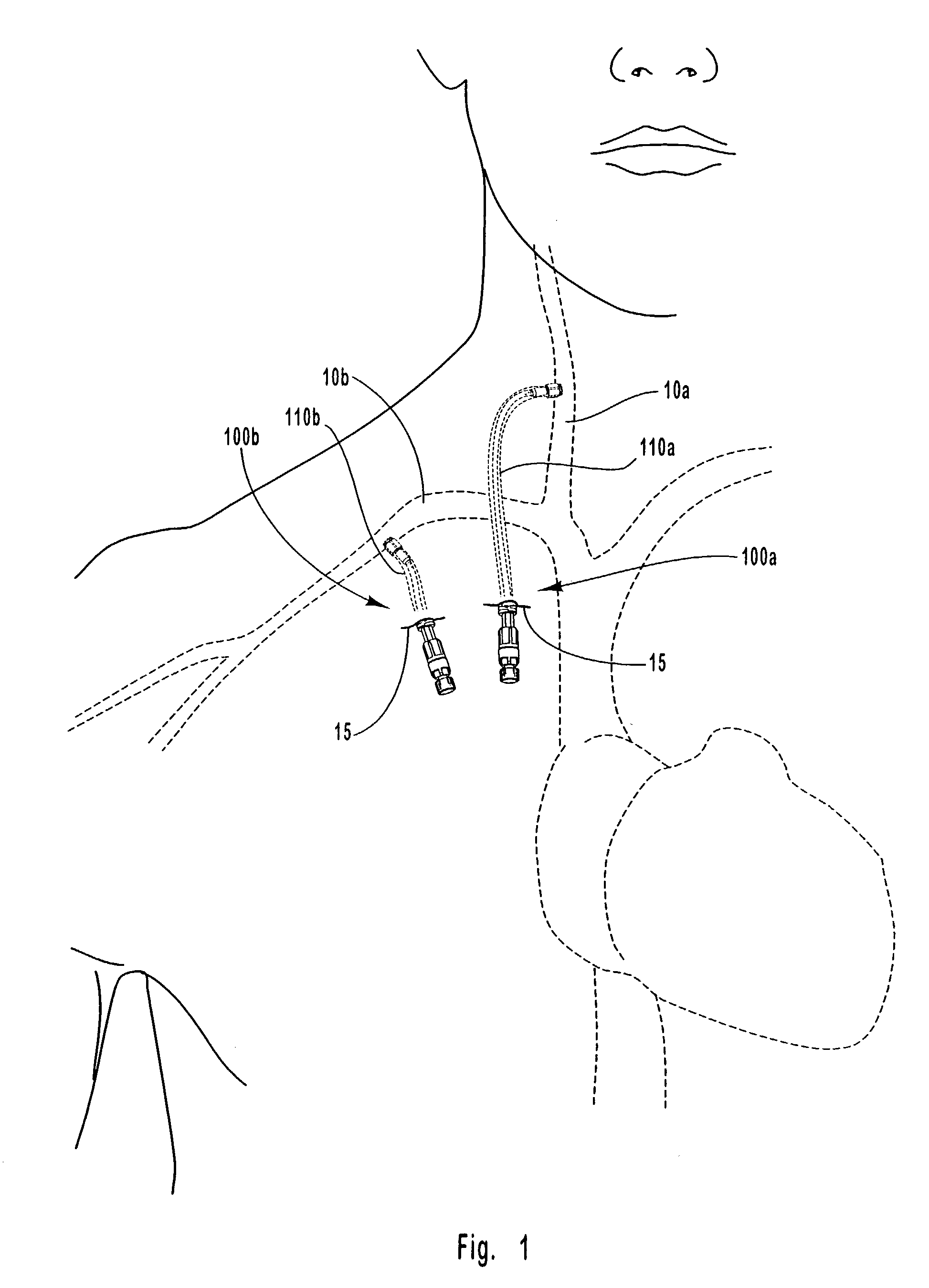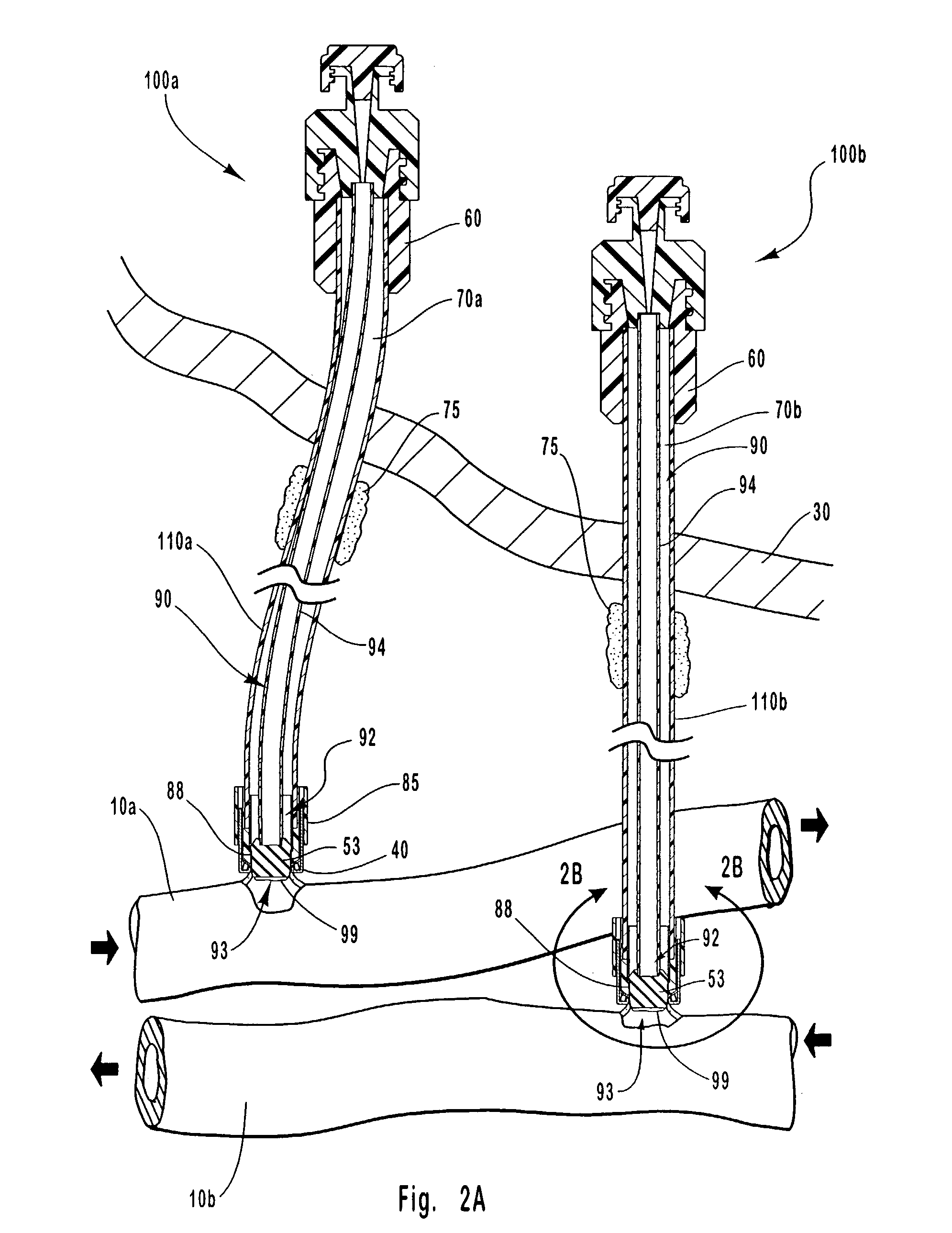Apparatus and methods for occluding an access tube anastomosed to sidewall of an anatomical vessel
- Summary
- Abstract
- Description
- Claims
- Application Information
AI Technical Summary
Benefits of technology
Problems solved by technology
Method used
Image
Examples
Embodiment Construction
[0048]Several different embodiments of the occludable access tube apparatus are disclosed herein. One embodiment of the apparatus of the present invention is shown in FIGS. 1–4H at 100. Other embodiments are identified as 100′ and 100″ respectively in FIGS. 5 and 6.
[0049]The primary components of the device include the following. First, an access tube is provided, identified generally at 110, which is adapted for anastomosis to an anatomical vessel at an anastomosis end. The anastomosis procedure is typically facilitated by the use of an anastomosis component, identified as a target vessel anastomosis ring 40 in several of the accompanying figures. The target vessel anastomosis ring may be adapted to cooperate with an access tube anastomosis ring, identified generally at 85, in accomplishing the anastomosis procedure.
[0050]An access end of access tube 110 opposite from an anastomosis end extends through the skin and is externally accessible. Fitting within the access tube at the acc...
PUM
 Login to View More
Login to View More Abstract
Description
Claims
Application Information
 Login to View More
Login to View More - R&D
- Intellectual Property
- Life Sciences
- Materials
- Tech Scout
- Unparalleled Data Quality
- Higher Quality Content
- 60% Fewer Hallucinations
Browse by: Latest US Patents, China's latest patents, Technical Efficacy Thesaurus, Application Domain, Technology Topic, Popular Technical Reports.
© 2025 PatSnap. All rights reserved.Legal|Privacy policy|Modern Slavery Act Transparency Statement|Sitemap|About US| Contact US: help@patsnap.com



